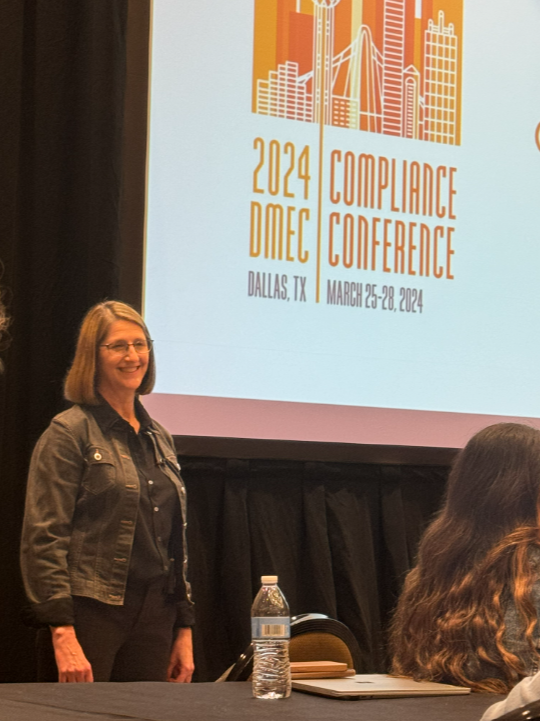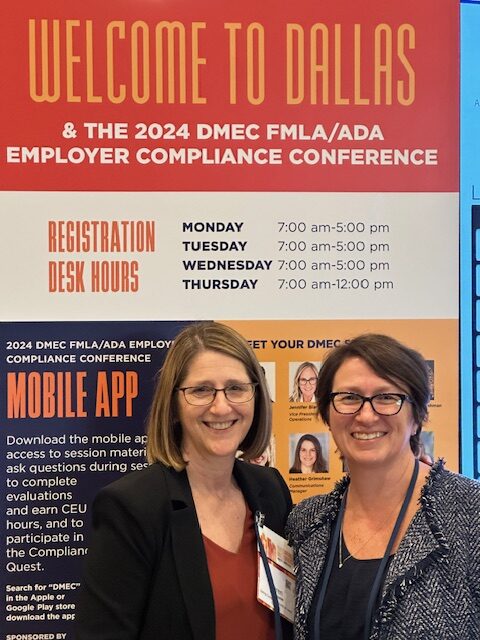Every year, the Risk and Insurance Management Society (RIMS) hosts its annual RISKWORLD conference, bringing together thousands of risk professionals to collaborate, learn, and shape the future of the industry. Set against the vibrant backdrop of Chicago, RISKWORLD 2025 delivered a powerful mix of emerging insights, strategic innovation, and spirited connection.
1) The Rise of Artificial Intelligence (AI) and Emerging Tech
With the ever-changing landscape of leave and accommodation laws, staying compliant remains a top priority for employers. This year’s conference offered valuable insights into managing the intersection of federal and state regulations. Experts shared practical advice on how to avoid common mistakes and streamline compliance efforts across diverse workforces. Here are some noteworthy sessions:
- In “Artificial Intelligence: What Is It, How Do I Recognize It, and How Do I Manage Its Risk?” speakers broke down AI fundamentals and explored strategies to manage model risk.
- The session “How AI Is Elevating Care Within Claims” highlighted practical use cases in automating claims workflows and improving outcomes.
- In “The New Cyber Battlefield: How AI Is Transforming Digital Attacks and Defenses,” experts demonstrated how AI is changing both the threat landscape and defense strategies.
2) Strategic Risk Management and Resilience Planning
This year reinforced that risk managers are no longer back-office advisors — they’re strategic partners at the leadership table. Many sessions emphasized using ERM and advanced analytics to drive proactive decision-making and build enterprise-wide resilience. Some hot-button presentations included:
- “Earn a Seat at the Table: Making Sure Risk Management Is Included in Strategic Decision-Making” laid out tactics to elevate the risk function’s role in C-suite conversations.
- “Unleashing the Power of Risk Culture: A Catalyst for ERM Success” explored how fostering a strong internal risk culture can fuel more resilient programs.
- “What Next? Leveraging Risk as an Input for Leadership Decisions” encouraged organizations to use risk data as a leadership tool — not just for compliance.
3) Innovations in Leave and Accommodation Management
With regulatory pressure mounting and the climate crisis accelerating, environmental risk and ESG transparency were center stage this year. Organizations are expected not just to comply, but to lead. Some sessions I found notable include:
- “Adapting Organizations to a Changing Climate: How to Achieve Business Resilience and Reporting Compliance” tackled strategies to meet climate goals while maintaining operational strength.
- In “The AI Impact on Climate Strategy and the World,” speakers discussed how data and technology are enabling more responsive environmental risk mitigation.
- “Viewpoints on ESG from the C-Suite to the Supreme Court” provided insights into navigating evolving ESG expectations at every organizational level.
4) Strategic Risk Management and Resilience Planning
Captives continue to stand out as a sophisticated solution for managing volatility, and their presence at RISKWORLD 2025 was stronger than ever — especially considering ongoing market hardening and cost pressure. I wanted to spotlight the following presentations:
- “From Safety Nets to Power Plays: How Captives Leverage Structured Reinsurance” outlined creative ways captives are being used to address volatility.
- “Beyond Traditional Coverage Boundaries: The Hidden Potential for Captives in an Evolving Risk Landscape” looked at how captives are expanding into non-traditional lines.
- “Captive Insurance: Better Solutions for Tomorrow’s Risks” focused on captive structures that support long-term resilience in a hardening market.
As always, RISKWORLD was more than just sessions and seminars, it was about connection, collaboration, and community. From insightful panels to spirited networking, this year’s conference underscored the expanding role of risk professionals in building organizational strength and foresight. The Spring team enjoyed every moment and is excited to see what next year’s conference has in store for us. We’ll see you at RISKWORLD 2026!
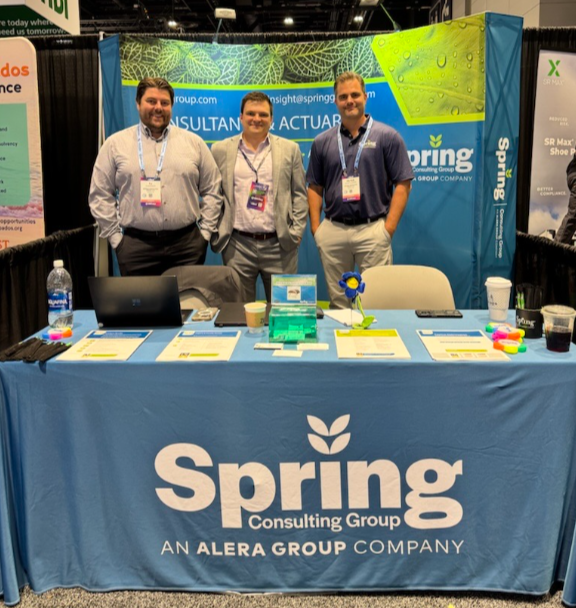
As spring unfolded, the 2025 Disability Management Employer Coalition (DMEC) Compliance Conference brought together absence management professionals from across the nation to explore emerging trends, compliance strategies, and innovative solutions in the world of leave management. Held in Columbus, Ohio, this year’s conference offered in-depth sessions on pressing issues, including compliance, mental health accommodations, technological advancements, and diversity in the workplace. Here’s a look at some of the key topics that were discussed:
1) Navigating Complex Compliance Challenges
With the ever-changing landscape of leave and accommodation laws, staying compliant remains a top priority for employers. This year’s conference offered valuable insights into managing the intersection of federal and state regulations. Experts shared practical advice on how to avoid common mistakes and streamline compliance efforts across diverse workforces. Here are some noteworthy sessions:
- DOL Updates: 2025 and Beyond
This session offered a deep dive into upcoming changes to the Department of Labor’s regulations and what HR teams need to do to stay ahead of the curve.
- When the PWFA, ADA, PUMP Act and FMLA Intersect: How to Unravel from a Tangled Mess
Speakers unpacked the complexities of these intersecting laws and shared strategies for managing situations where they overlap.
- Navigating the Bermuda Triangle: PFML Private Plan v. State Plans
Our team was joined by a regulator, attorney, carrier, and employer to outline the different use cases and provide audience members with a framework for making a decision about whether they should file a private plan or stay with the state.
2) Mental Health Support
Mental health remains a cornerstone of today’s workplace benefits, and the conference didn’t shy away from tackling this critical issue. Sessions focused on creating a supportive environment for employees experiencing mental health challenges. These discussions provided actionable strategies for maintaining compliance while prioritizing employee well-being:
- I’m Stressed! Managing Psychological Disability Claims in the Workplace
Experts explored best practices for managing mental health claims, with a focus on the unique complexities of psychological disabilities in the workplace.
- Balancing Care and Compliance in the Complex Landscape of Mental Health Accommodations and Leaves
This session helped employers navigate the delicate balance of offering accommodations while staying compliant with ADA and FMLA guidelines.
- The Mental Health LTD Challenge: Because Parity is Not a Priority… Yet
A deep dive into how mental health conditions are handled under Long-Term Disability (LTD) policies and the ongoing challenge of achieving true mental health parity in benefits.
3) Innovations in Leave and Accommodation Management
Technology continues to transform the way employers manage leave and disability claims. This year’s conference highlighted cutting-edge tools and strategies, including the use of artificial intelligence (AI) to streamline compliance processes, as well as other technologies to support for disability management. These sessions explored how employers can leverage technology and data-driven insights to improve leave management and drive better outcomes:
- Artificial Intelligence, Automated Systems, and Leave and Accommodation Compliance
This session explored how AI is reshaping leave management, helping employers automate compliance and improve accuracy in decision-making.
- Transforming Disability Management: Evidence-Based Solutions with Psychedelic-Assisted Therapy
One of the most forward-thinking sessions, this presentation discussed the growing role of psychedelic-assisted therapies in managing mental health conditions in the workplace.
- Remodeling Your RTW/SAW Program with 5 Innovative Tools
Participants learned about five new tools designed to optimize Return-to-Work (RTW) and Stay-at-Work (SAW) programs, improving the experience for both employers and employees.
The 2025 DMEC Compliance Conference provided a comprehensive overview of the challenges and opportunities facing HR and absence management professionals today. From navigating complex compliance requirements to embracing new technologies and supporting employee mental health, the conference highlighted the evolving nature of leave and accommodation management. With valuable insights and actionable strategies, attendees left the conference better equipped to address the needs of their diverse workforces while staying compliant with an ever-changing legal landscape. We’re already looking forward to what next year’s conference will bring!
The 2025 Captive Insurance Companies Association (CICA) Annual Conference brought together professionals from across the risk management industry to explore emerging trends and challenges. Held in Tucson, Arizona, this year’s event featured thought-provoking discussions on regulatory updates, emerging risks, and innovative solutions. Below are the key themes that shaped the agenda.
1. Regulatory and Tax Updates
Regulatory changes continue to be a significant concern for captive owners. With the new administration and shifting regulations, staying up to date is critical for ensuring compliance and mitigating risks. Notable compliance-focused sessions included:
– “IRS Audits – Now and the Future”: This session examined the evolving landscape of IRS audits and the impact on captive owners, providing insights into anticipated changes.
– “What’s New / What’s Hot / What’s Not – Tax News You Need”: Presenters explored the latest tax updates that affect captive insurance structures, with a special focus on M&A implications.
2. Emerging Risks: Climate Change and Sustainability
As the world grapples with climate-related challenges, captives are increasingly seen as vital tools for managing environmental risks. This year’s conference addressed how captives can integrate climate resilience into their risk management strategies. Some notable sessions include:
– “Advancing Climate Resilience: Integrating Parametric Insurance and Carbon Credits in Captive Programs”: Spring’s Chief P&C Actuary, Peter Johnson, alongside a representative from the State of Connecticut and CEO of Ryskex, discussed how captives are incorporating parametric insurance and carbon credits to address climate risks.
– “Intersection of Climate Risk and Captives”: This presentation examined the growing intersection of climate change and captive insurance, exploring how captives are playing a role in mitigating climate-related risks.
3. Innovative Technologies in Captives
Technological advancements are revolutionizing captives, enhancing risk management, claims handling, and overall operational efficiency. Technology continues to be a key driver for the future of the industry. Several sessions focused on innovative technology being used in the industry:
– “Future-Ready Risk Control: AI in the Captive Landscape”: This session explored the role of artificial intelligence in transforming risk control within captives, offering a glimpse into how AI will shape the future.
– “Optimizing Captive Management through Best Practices”: Speakers focused on utilizing technology and innovative practices to optimize captive operations. This session provided actionable insights for improving efficiency.
4. NextGen and Diversity in Captive Insurance
The future of the captive industry depends on cultivating a diverse and dynamic workforce. CICA’s commitment to engaging young professionals and promoting diversity was evident throughout the conference. Here are some presentations I thought best highlighted the importance of prioritizing diversity and ensuring the long-term success of the industry.
– “Diversify Your Team, Multiply Your Innovation”: This session highlighted the importance of diversity in driving innovation within captive programs and provided strategies for building inclusive teams.
– “Amplify Women and NEXTGen Networking Luncheon”: A key networking event designed to connect young professionals with industry leaders, providing mentorship and career development opportunities.
As always, the CICA Annual Conference provided a valuable platform for networking, learning, and sharing ideas within the captive insurance community. It was a privilege to engage with so many passionate professionals dedicated to driving innovation and shaping the future of captives. From navigating regulatory complexities and embracing new technologies to addressing emerging risks and fostering diversity, this year’s discussions showcased the dynamic nature of the captive landscape.
As we look ahead, we remain committed to staying at the forefront of these evolving trends and delivering forward-thinking solutions to our clients. We look forward to continuing these conversations and seeing what next year’s CICA conference will bring.
As we slowly approach the end of 2024, we had the pleasure of sponsoring and attending The Northeast HR Association (NEHRA)’s Annual Conference in the scenic Newport, RI. NEHRA brings together HR experts across the region to discuss current trends and developments impacting the HR and benefits industry. Some of the topics I found most noteworthy include:
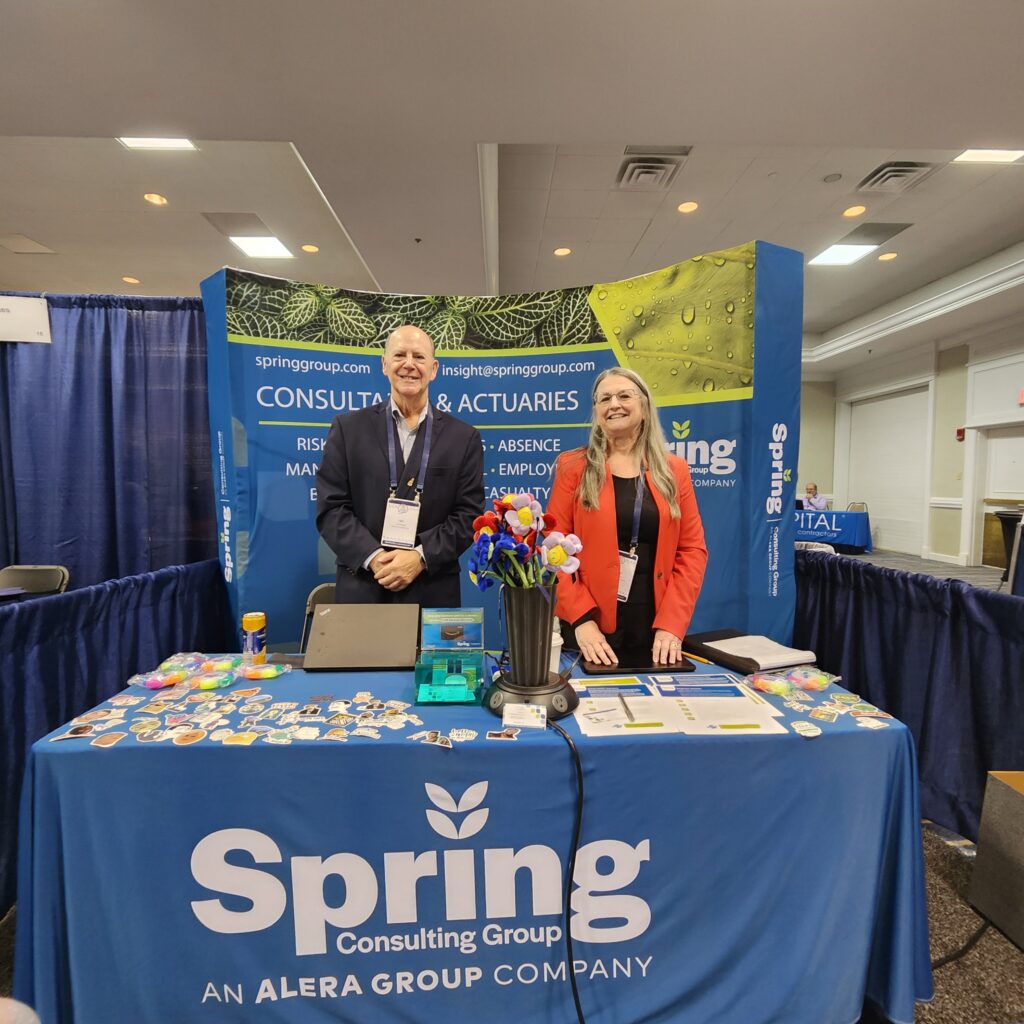
Championing Diversity, Equity and Inclusion (DEI)
Championing DEI was a focal point at NEHRA’s Annual Conference this year, underscoring its significance in today’s workforce. By actively promoting diverse perspectives, organizations can enhance creativity and problem-solving capabilities, driving better business outcomes and creating equitable workplaces. Here are some related sessions I found impactful:
– The kickoff session, “Live & In-Person Employment Law Update – Cultural Flashpoints Edition,” spotlighted how HR teams can stay compliant regarding protected classifications such as religion, race, LGBTQ+ identity and national origin.
– The presentation “DEIB in Action: A Diversity Monologues Experience,” featured actors reenacting authentic employee experiences related to race, gender and sexual orientation.
– The interactive workshop, “Disability Etiquette,” demonstrated the do’s and don’ts when interacting with co-workers with disabilities such as vision, hearing, and mobility impairments as well as mental health, learning, and other non-apparent disabilities.
Fostering a Supportive (& Efficient) Work Culture
Creating a supportive yet efficient work culture remains a challenge for HR teams nationwide. Speakers shared best practices for prioritizing collaboration and open communication while emphasizing efficiency. This focus on supportive environments that boost employee morale and productivity was a hot-button topic this year.
– HR leaders explored unique “Situational Awareness & De-Escalation [tactics] in the Workplace” and tips for addressing high-tension workplace situations.
– As the war for talent continues, two talent acquisition professionals discussed the importance of “Strategic Flexibility: [and] Navigating Talent Shortages with Flexible Hiring Practices.”
-Berklee College of Music’s Associate Director of Talent Acquisition discussed the importance of “Stay Interviews” and how simple check-ins can remind employees of their importance to organizational success.
Supporting Mental Health
Mental health continues to be a top priority for HR and benefits professionals across the region. Workshops and panels highlighted the need for initiatives that reduce stigma and promote work-life balance. By prioritizing mental health, HR professionals can create happier, healthier workplaces that enhance company culture and drive long-term growth. Below are some valuable sessions I’d like to spotlight.
– This year, attendees were able to enjoy a Sunrise Wellness Walk each morning of the conference. It provided a great opportunity to destress and explore the beautiful Newport neighborhood.
– As isolation and loneliness continue to impact many Americans, the session “Isolation, Inclusion and Workplace Collective Care: Strengthening Staff Mental Health” showcased tactics for fostering a supportive environment.
– A clinical psychologist addressed “Getting Intentional About Managing Stress and Burnout: From Personal Practice to Organizational Impact,” providing guidance on navigating personal stress and building confidence.
In summary, the NEHRA’s Annual Conference created a vibrant atmosphere for networking and meaningful discussions on pressing trends shaping the HR landscape. We thoroughly enjoyed reconnecting with industry leaders, meeting emerging talent, and participating in insightful sessions. We look forward to seeing how these discussions evolve at next year’s conference.
As Vermont was named the largest captive domicile globally in 2022, it has developed into a hub for alternative risk financing and insurance innovations. The Vermont Captive Insurance Association (VCIA) recently hosted its 2024 Annual Conference, a beacon in the captive insurance industry. This year’s conference, held in the heart of Vermont (Burlington), offered a dynamic platform for industry professionals to delve into the evolving landscape of captive insurance. From exploring the fundamentals of captive formation to addressing the pressing challenges posed by emerging technologies and regulatory changes, the conference provided invaluable insights and strategies. Attendees had the opportunity to engage with thought leaders, share best practices, and discover innovative solutions that will shape the future of the industry.
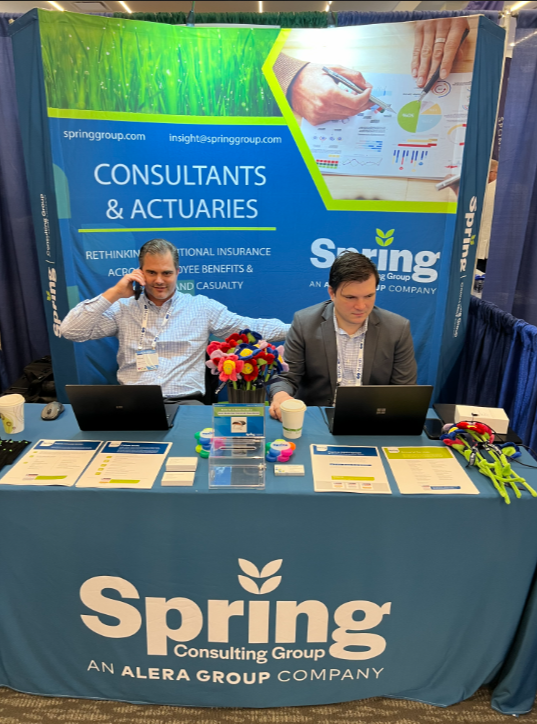
1) Captive Formation and Feasibility
Since Vermont is the most popular domicile globally, VCIA provides a great avenue to help first-time employers explore potential captive endeavors. Understanding the basics of captive formation and testing for feasibility is essential for anyone looking to establish or manage a captive insurance company. Here are some related sessions that caught my eye:
-The opening session, “Captive Immersion: Feeling Puzzled? Let’s Piece It Together,” brought together various stakeholders, including an attorney, underwriter, actuary, consultant and a state official to give piece-by-piece instructions on entering the captive industry.
– The presentation, “The Economic Landscape & Your Captive’s Investment Portfolio,” reviewed the current state of the economy and macroeconomic factors that may influence investment gains in a captive.
2) Emerging Technologies and Innovation
As the risk landscape evolves rapidly, captives must adapt to emerging tools and technologies. Addressing emerging risks such as cyber threats and leveraging innovations like AI and data analytics are vital for maintaining relevance and effectiveness in risk management, ensuring captives can proactively manage and mitigate modern challenges. These presentations spotlighted the need for alternative solutions to address emerging (and at times unforeseen) risks:
– The Cost of Compliance: ADA/FMLA Court Cases and Jury Verdicts offered a deep dive into recent legal cases, providing lessons on how to avoid costly compliance mistakes.
– The presentation, “Your Data Reimagined! A Captive Case for Data Visualization,” showcased how employers can utilize data visualization to help interpret large data sets and areas for risk optimization.
3) Regulatory and Compliance Updates
Navigating the complex regulatory environment and staying updated on captive taxation and oversight changes are crucial for compliance and strategic planning. It is essential that captive managers and owners are informed about regulatory requirements and can adapt their practices to remain in good standing and avoid potential legal pitfalls. Some insightful sessions include:
– Our VP, TJ Scherer, teamed up with the State of VT’s Dan Patterson in an open discussion group to chat about “Upcoming Changes in Regulation Oversight” and what captive owners in VT should keep their eyes out for.
– Four tax experts convened to discuss “Captive Taxation: What’s New & What’s Next.” They reviewed recent IRS, federal and state updates and discussed how companies can best prepare for an IRS audit.
4) Passing the Torch
Energizing new leaders and providing growth opportunities for newcomers are essential for the long-term sustainability of the captive insurance industry. By fostering new leadership, organizations can drive future success and address the ongoing challenge of talent shortages. These topics focused on the importance of developing talent to ensure that fresh perspectives and innovative ideas are woven into the industry:
– State of VT’s Chief Examiner, Heidi Rabtoy’s “Discussion Group: Attracting & Energizing New Leaders” spotlighted the current talent shortage in the insurance space, and tips to attract and retain next-generation industry leaders.
– One of my favorite parts of VCIA is the Newcomers’ Orientation; ensuring first-time attendees are educated and feel welcome is essential to the industry’s future success.
The enthusiasm and forward-thinking discussions from this year’s conference left a lasting impact on the captive insurance landscape. The conference highlighted the importance of understanding the fundamentals of captive formation and staying ahead of emerging risks, underscoring the critical need for compliance amidst shifting regulations. Moreover, the focus on cultivating new leadership promises a vibrant future for the industry. By harnessing the knowledge and connections gained at VCIA, risk professionals are well-equipped to navigate the complexities ahead and drive continued success in the world of captive insurance.
As summer winds down, the Disability Management Employer Coalition (DMEC) hosted its 2024 Annual Conference in the energetic city of Nashville, TN. Known for its rich musical heritage, Nashville provided a lively backdrop for this year’s event, bringing together professionals from across the absence management spectrum to discuss the latest trends, challenges, and best practices. Here are some key highlights from the conference.
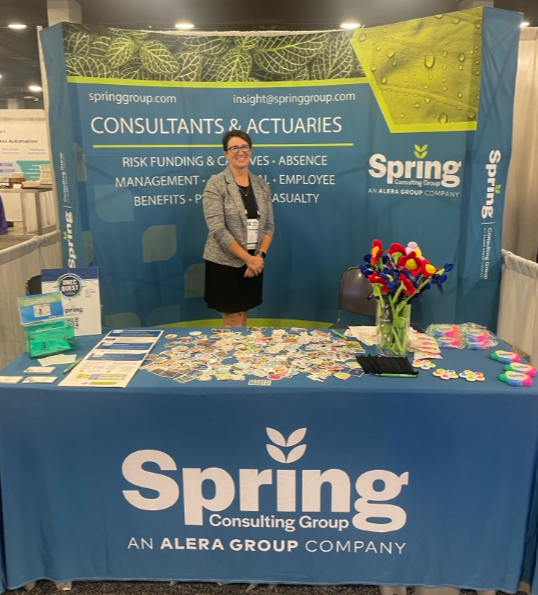
1) The Future of Paid Family and Medical Leave (PFML)
The focus on mental health remains prevalent as organizations continue to find innovative ways to support employee well-being. This year’s conference offered valuable insights into how mental health is evolving in the benefits industry:
-The session The Importance of a Guided Claim Experience emphasized the need for compassionate and informed support during the claims process, which can significantly impact employee well-being.
– I was joined by a group of leave solution leaders to examine findings from a recent leave report which looked at various factors including recruitment, retention, productivity, moral, and more with a focus on how successful employers are addressing leave managementns on benefits spend and workplace culture.
– One of the catchiest presentations, Walk, Crawl, Run: The PWFA Turns One, reflected on the one-year anniversary of the Pregnancy Workers Fairness Act (PWFA) and best practices for HR teams to stay compliant.
2) ADA/FMLA Compliance Updates
Navigating the complex web of federal, state, and local regulations remains a critical challenge for employers. This year’s sessions provided valuable guidance on staying compliant while managing diverse and geographically dispersed workforces:
– The Cost of Compliance: ADA/FMLA Court Cases and Jury Verdicts offered a deep dive into recent legal cases, providing lessons on how to avoid costly compliance mistakes.
– The ADA Compliance Mini Boot Camp led by Rachel Shaw was a must-attend for anyone looking to deepen their understanding of ADA requirements and refine their compliance strategies. This workshop was instrumental in equipping participants with tools to tackle common challenges and elevate their programs.
– I led a workshop with Baystate Health’s Manager of Disability and Leave, Lauren McCormick, in a session titled A Step-by-Step Guide to Refining Your ADA Strategy. In an interactive format, the session provided participants an opportunity to address real-life ADA scenarios and how to best address each individual case using a methodical process.
3) Telework Accommodations
As companies continue to navigate the post-pandemic landscape, finding the right balance between remote work and returning to the office is top of mind. The conference sessions provided practical insights into managing this transition effectively:
– The session “You Can Have Paid Leave AND a Productive Workforce. Here is the Secret Sauce.” explored how flexible work arrangements can coexist with robust paid leave policies to enhance employee satisfaction and productivity.
– Council from Reliance Matrix explained how many employers are quick to provide leave of absence to workers with a medical condition, whereas many alternative compliant leave options exist in their presentation, Encouraging Employees to Stay at Work or Return to Work.
–Another eye-catching session, We Goofed. Now What? An Accommodations Tale, brought light to a common scenario in which an employer fails to provide adequate accommodations under the ADA and/or PWFA; as well as best practices to address said employees’ needs.
4) Tech/AI’s Role in Absence Management
Technology continues to play a transformative role in the absence and disability management space, offering new ways to streamline processes and improve decision-making:
– Spring’s in-house attorney, Lynne Noel, together withPatagonia’s Senior Manager, Leave of Absence, Lauren Shipper, discussed Using Benchmarking to Refresh Your Program. They highlighted the importance of leveraging data to stay competitive and refine absence management programs. Insights provided actionable strategies for using benchmarking as a tool for continuous improvement.
– A group of data analytic experts explained the practical parameters of AI solutions in claims processes and the upsides and dangers to implementing AI systems in their presentation, The Transformation: How AI is Enhancing Analytics and Optimizing Decision-Making.
– During the session, The Future of AI in Leave and Disability Management, three leave and disability administrators discussed the current state of AI in the industry and how it can help streamline processes and improve employee satisfaction.
Final Thoughts
The DMEC 2024 Annual Conference in Nashville was a resounding success, filled with opportunities to learn, connect, and share best practices. From deep dives into compliance and mental health to exploring the latest technological innovations, the conference offered something for everyone. As always, it was a pleasure to reconnect with industry leaders and bring back fresh ideas to enhance our consultative offerings. We’re already looking forward to what next year’s conference will bring!
As society increasingly pivots towards clean and green energy solutions, driven by the imperative of sustainability and the dramatic effects of climate change, the energy landscape is undergoing a profound transformation. Companies across all industries are embracing renewable alternatives and adopting environmentally conscious practices. This shift can lead to many obstacles when it comes to liabilities and coverage. Last week, I had the pleasure of attending the International Risk Management Institute (IRMI)’s Energy Risk & Insurance Conference (ERIC) which tackled this very issue. Experts across the risk management industry convened to discuss emerging energy risks and potential solutions. I had the pleasure of presenting on this topic, “Captives—Too Late for Fossil Fuels or Too Soon for Green Energy?” and wanted to share some key insights.
The Legacy of Traditional Energy
For decades, traditional energy sources like coal, oil, and natural gas have served as the pillars of global energy infrastructure. These sources have powered industries, fueled transportation, and sustained economies worldwide. However, their reliance on finite resources and contribution to environmental degradation have brought their sustainability priorities into question.
While traditional energy remains deeply entrenched in global economies, its future is increasingly uncertain. Mounting pressure to reduce carbon emissions, coupled with the emergence of renewable alternatives, has catalyzed a shift towards cleaner energy sources.
The Promise of Renewable Energy
The rise of renewable energy technologies such as solar, wind, and hydroelectric power represents a socio-economic shift towards sustainability. These sources offer cleaner alternatives, reducing carbon emissions and mitigating the impacts of climate change. Their abundance and renewable nature make them promising candidates for a greener future.
However, the transition to renewable energy has its challenges. The intermittency of renewable sources coupled with the need for infrastructure investments, presents hurdles to widespread adoption. The inertia of traditional energy industries along with regulatory complexities further slow down the pace of transition.
The Role of Captive Insurance
Amidst this energy transition, captive insurance has been at the forefront for risk management teams trying to optimize coverage and reduce costs. With few regulations, many insurers are moving away from insuring coal and creating more inclusive policies for oil and gas. It is estimated that 62% of reinsurers now have coal exit policies and 38% have oil and gas exclusions as shift away from fossil fuels accelerates.1 Insurance coverages and costs coupled with sustainability priorities have many organizations questioning if switching to alternative energy sources is critical.
On the other end of the stick, insuring green/new energy has not been easy. Although we are seeing new coverages such as leakage insurance for CO2, and coverage for solar, hydrogen, and bioenergy, pricing and underwriting remain huge issues. With any new risks, there are still untested coverages and language that may lead to future conflict when claims are filed. Many insurers also worry about the scalability of the new coverages once many companies shift to green energy; how will the underwriting processes and pricing shift or scale once more companies adopt green energy?
This natural lack of transition had sprouted a giant funding dilemma of insuring energy companies. Although many large companies are self-insured and/or adopt captive insurance as a solution, often mid and smaller companies are stuck in no-man’s-land. Many of these companies are looking into alternative funding options, such as a group captive, to help share risks with similar organizations without paying obscene premiums. This allows mid and smaller energy companies to meet lender requirements at lower rates and reduce net costs through reinsurance.
Where are Things Headed?
I expect in the coming years we may see drastic changes in how energy companies are insured; a lot depends on how committed commercial insurers are to exiting certain industries and promoting new energy coverages. There seem to be certain lines/industries that scale faster, both with regard to comprehensive underwriting processes and pricing volatility. Another significant consideration is governmental/regulatory changes. With climate change as a major political issue, policyholders and insurance companies may need to adapt more quickly if regulations are passed pushing for the use of green energy.
In conclusion, the dichotomy between old and new energy and how to properly insure them is a hot-button topic in the risk world. As older energy sources, such as coal, are becoming more and more uninsurable, newer green energy sources are untested and challenging to underwrite. We are in an interesting position where insurance companies and policyholders know they must shift towards renewable energy but cannot properly insure it (yet). Although alternative funding options, such as captive insurance, have proved thus far to be a solution, there are still so many unforeseen variables that will undoubtedly affect how energy is insured.
1 https://global.insure-our-future.com/with-new-coal-uninsurable-insurers-start-to-move-on-oil-and-gas/
Every year, the Risk Management Society (RIMS) hosts its annual RISKWORLD conference, serving as an opportunity for 10,000+ risk professionals to convene and discuss the industry’s future. Against the backdrop of San Diego, this year’s conference was a testament to the ever-evolving landscape of risk management and insurance. As industries grapple with unprecedented challenges, the conference emerged as a beacon of insight, fostering discussions on cutting-edge practices, emerging trends, and innovative strategies. Here are some of the most popular topics discussed during this year’s conference.
1. Emerging Trends and Industry Challenges
The insurance industry is constantly evolving, presenting both opportunities and obstacles for risk management professionals. These sessions explored the latest trends, regulatory changes, and strategic approaches to navigating the dynamic landscape of risk management.
– As climate change and natural disasters continue to impact rates nationwide, experts discussed “How All Industries Can Manage Their Water- and Nature-Related Risks.”
– The session, “Risks Today or Risks Tomorrow? Leveraging Data for Future-Proof Risk Management,” featured how geolocation and risk data are being used to influence property and casualty (P&C) strategies.
2. Forward-Thinking Approaches and Strategies
Innovation lies at the heart of effective risk management, and RISKWORLD 2024 showcased forward-thinking tactics for staying ahead. From optimizing risk transfer and resilience planning to exploring new methodologies for risk assessment and mitigation, attendees gained valuable insights into cutting-edge techniques and innovative strategies that are reshaping the landscape of risk management, ensuring they are well-equipped to tackle the challenges of tomorrow.
– A lawyer discussed common roadblocks and assumed contractual liability regarding “Strategies for Effective Risk Transfer and Mitigation.”
– Financial leaders from LinkedIn and Orgill discussed their concerns about employee safety, mitigating risk and ensuring organizational success in their session, “From Forecast to Forefront: New Research on the CFO’s Strategic Mindset and Trends to Watch in Risk Management.”
– A risk manager from a manufacturing organization discussed the importance of “Strategic Decision Making” and how to address suboptimal results internally.
3. Diversity, Equity, and Inclusion (DEI)
Promoting diversity, equity, and inclusion has become a strategic imperative for organizations across industries. These sessions highlighted the importance of fostering inclusive workplaces, advancing DEI initiatives, and leveraging diverse perspectives for business success.
– Leaders from the National African American Insurance Association (NAAIA), the Asian American Insurance Network (AAIN), the Latin American Association of Insurance Agencies (LAAIA), Rainbow Risk Alliance, Insure Equality, and the Association of Professional Insurance Women (APIW) shared their experience with introducing DEI efforts in their discussion, “Championing Diversity: Industry Leaders Speak Out.”
– In the session, “DEI Is Not Going Anywhere and Here’s Why: The Who, What, Where, When and Why of DEI,” experts discussed the importance of DEI programs and specific success stories.
– As DEI is receiving some societal backlash, the presentation “The Rise and (Fall?) of DEI: Exploring the Impact of Diversity, Equity, and Inclusion Initiatives on Risk Management” focused on current trends and future of DEI efforts.
4. AI, Technology, and Innovation
Innovation in technology is transforming the insurance landscape. These sessions delved into the role of artificial intelligence, cybersecurity, and data analytics in shaping the future of risk management.
– In their presentation, “AI Revolution: A New Era for Risk Management and Loss Control,” a group of risk managers discussed how they are using AI to help with workers’ compensation applications, loss prevention, and fraud identification.
– Google Cloud’s CISO discussed the latest trends in generative AI and how it can impact the insurance sector in his session, “Navigating the W(AI)LD West: Maximizing the Transformative Power of AI.”
– A session from the RIMS New York Chapter, “AI Did What? Anticipating Insurance Coverage Issues Arising from AI Liabilities,” evaluated the kinds of liabilities and potential issues that can arise from utilizing AI in risk management.
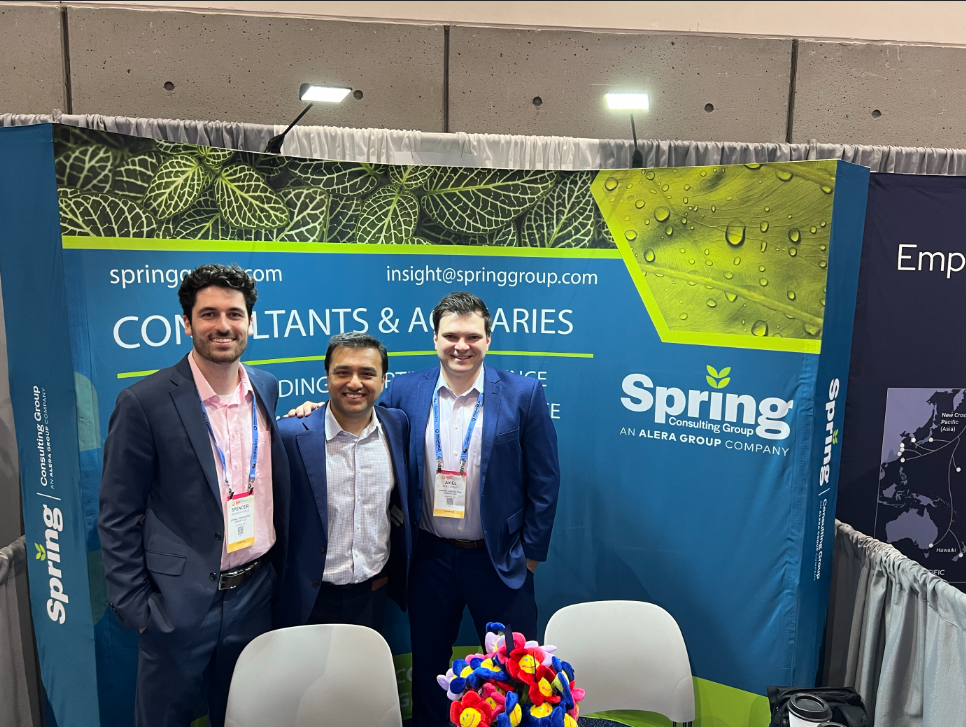
As the curtains draw on another successful RISKWORLD conference, the Spring team and I had a great time tuning into some insightful sessions and reconnecting with industry leaders. The spirit of collaboration and innovation was lively this year, and I’m excited to see what next year’s conference has in store for us.
As we entered Spring, we had the pleasure of attending the Disability Management Employer Coalition (DMEC)’s FMLA/ADA Employer Compliance Conference last week. The event brings together absence management, health and welfare experts, including attorneys, to discuss trending updates and methodologies in the world of absence/disability management compliance. Here is a snapshot of sessions I found engaging, representing top areas of interest this year.
1. The Ins and Outs of Legal Compliance
Compliance remains a cornerstone for employers navigating the complex web of regulations. Here are some sessions that dove deep into different areas of compliance concerns:
– A group of former military personnel tackled the unique circumstance of addressing employees currently or formally serving in the military. Their session was titled “Can-U-SERRA?”
– The session, “Pregnant Workers’ Fairness Act (PWFA): A View From the Top,” reviewed resources pregnant employees have and what employers must do to stay compliant.
– In the interactive session, “State Your Leave: A Case Study Expedition Through Multiple States,” attendees were tasked with determining which laws/regulations take precedence over others.
-Two federal agency leaders clarified recent “Insights from the DOL and EEOC: Current FMLA and ADA Challenges,” which outlined recent regulatory updates and how HR teams should address them.
2. Addressing Unique Challenges
HR teams nationwide must adapt to new regulatory updates and shifting best practices. Below are some insightful presentations that outline unique scenarios and how to tackle them.
– Counsel from Reliance Matrix explained “How to Manage an Uncooperative Employee Under the ADA.” They outlined what medical information employers can request, important deadlines and best practices.
– My session, “How Workforce Flexibility Translates to Absence Management Success,” reviewed quantitative data that suggests more flexible employers see higher return-to-work rates and showcased specific employer case studies.
– I was joined by AbsenceSoft’s Chief Strategy Officer, Seth Turner, to discuss “How to Evaluate and Mature Your Leave Program.” We shared a maturity model for leave management and provided suggestions for streamlining and optimizing leave programs.
3. Ensuring Diversity, Equity and Inclusion
Championing Diversity, Equity and Inclusion (DEI) remains a top priority for HR and benefit teams across the US. With that, DEI was a hot-button topic at this year’s conference; here are some related sessions I would like to spotlight.
– The penultimate presentation, “One Workplace, Many Generations: Compliant Benefits for All,” helped identify ways to satisfy a multi-generational workforce with benefit offerings while staying compliant.
– The bonus session, “Supporting Employees During Pregnancy and Childbirth,” helped attendees understand current federal laws impacting pregnant workers including state anti-discrimination laws and paid family and medical leave laws.
– “Workplace Religious Accommodation Requests: What You Need to Know” provided great insights when it comes to ensuring employees of all religious beliefs are protected, and HR professionals are aware of federal resources and regulations.
As the conference concluded, attendees departed with a wealth of knowledge and insights to navigate the evolving landscape of leave management. With a renewed focus on compliance best practices like those mentioned above, organizations are poised to effectively support their workforce and meet the challenges and opportunities that lie ahead. I am excited to see what DMEC’s Annual Conference has in store for us in August.
